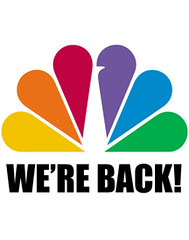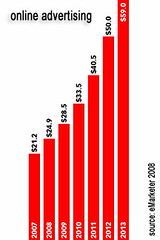Sometime in the 1990s, I signed on to pen a few articles for the most aggressive First Amendment advocacy magazine I've ever read. The content was rough enough that I still sometimes question my decision to participate. I have and had mixed feelings for a couple of the columns I wrote, although they were nothing compared to some of material submitted by others. But that is why I wrote them.
I was challenging my own convictions. I was contributing to a publication Stephen King supported, which was how I discovered it. I had also just recently participated in a win the ACLU had over the old America Online's TOS, which included an aggressive censorship policy against its members.
After a couple of issues, I dropped any future assignments, but it wasn't the limits of the First Amendment that shook me off. The editor/publisher and I had a falling out despite our developing friendship. The argument that did it was over the Second Amendment. I couldn't fathom that a publisher might hold one inalienable right up high but dismiss another outright.
The lack of responsibility and hypocrisy of the Journal News.
This previous experience was one of the first things that came to mind when I read about the Journal News publishing a map that included the names and addresses of almost 34,000 gun owners. The story, which began two weeks ago, has since escalated. In a case of tit-for-tat, someone decided to publish the names and addresses of the reporters and editors who work there.
Some of the editors are now unhappy and even frightened for themselves and their families. The newspaper has even reported that someone sent bags of white power to their offices, reminiscent of the terrorist scares several years ago. The paper's publisher, Janet Hasson, has hired armed guards for the offices.
Assuming the white powder reports are true, that is unquestionably over the line. But the rest of it, the publishing of names and addresses of reporters and editors, was fair. The paper's own blatant disregard for the responsibility that comes with the freedom of the press wasn't well thought out. The fear they feel isn't much different than the fear they instilled in gun owners and non-gun owners alike.
Perhaps one of my colleagues said it best, pointing out that at least some of those people on the list might be stalker victims or domestic violence victims, only purchasing a gun out of personal necessity. Or maybe there is even more to consider. Publishing the names of gun owners also gives criminals a potential list of gun-owning targets (or non-gun owning targets), gives neighbors a reason to be suspicious, frightens concerned seniors, gives prisoners the names and addresses of corrections officers and police officers, and invites everybody into everybody's personal affairs.
Incidentally, the map isn't even accurate. Many people listed have since moved or are deceased, making the map nothing more than an attempt to justify some notion that neighbors have a right to know who owns a gun or guns — an argument that suggests the public has a right to know which neighbors are journalists, people inclined to transform private lives into public affairs. It's all sad and silly.
The psychology of rights and press ethics.
Personally, it seems to me that there is a maturity in appreciating that the Bill Of Rights was included in the U.S. Constitution not because these rights were convenient or safe or popular. The Bill Of Rights are inalienable rights, meaning that they supersede the government's ability to grant them. They came about because it was the other way around. The citizens who made this government said they wouldn't give these rights up to the government.
Moreover, as inalienable rights, the expressed concept is that such freedoms are not granted by a majority at their privilege to a minority but rather owned and preserved equally by majorities and minorities alike, even when that minority consists of a single individual. In other words, we don't get to pick and choose which inalienable rights we want without the consequence of losing all of them.
That said, the Journal News might have been well within its rights to publish the map, but it doesn't excuse a blatant disregard for responsible news reporting. The same can be said for those who published the names and addresses of reporters and editors in an era where publishing is cheap and relatively easy, but I can't blame them. Equal opportunity sometimes breeds equal jeopardy.
What I do wish is that both publishers would have heard one of my former media professors challenge the ethical vs. free vs. responsibility perceptive of a free press in my media law class. He didn't speak about guns. Instead, he talked about the unwillingness of most newspapers and media outlets to publish the names of rape victims under the age of 18.
He proved his point by escalating the news value of the story, painting the progression that an editor might not publish the name of a 14-year-old victim, but would have a harder time not publishing her name if she was the daughter of a mayor, or if the mayor was responsible, or if other publications do. As he progressed, the hands of those who would not publish the name fell away with shattered convictions.
No, what the the Journal News did is not an exercise of two rights rubbing up against each other, creating the illusion that we have to make a choice. It is something much simpler. It is having the common sense to know that just because you can publish something, doesn't mean you have to publish it (or create laws to censor it). And maybe that is what the discussion ought to be about.
I was challenging my own convictions. I was contributing to a publication Stephen King supported, which was how I discovered it. I had also just recently participated in a win the ACLU had over the old America Online's TOS, which included an aggressive censorship policy against its members.
After a couple of issues, I dropped any future assignments, but it wasn't the limits of the First Amendment that shook me off. The editor/publisher and I had a falling out despite our developing friendship. The argument that did it was over the Second Amendment. I couldn't fathom that a publisher might hold one inalienable right up high but dismiss another outright.
The lack of responsibility and hypocrisy of the Journal News.
This previous experience was one of the first things that came to mind when I read about the Journal News publishing a map that included the names and addresses of almost 34,000 gun owners. The story, which began two weeks ago, has since escalated. In a case of tit-for-tat, someone decided to publish the names and addresses of the reporters and editors who work there.
Some of the editors are now unhappy and even frightened for themselves and their families. The newspaper has even reported that someone sent bags of white power to their offices, reminiscent of the terrorist scares several years ago. The paper's publisher, Janet Hasson, has hired armed guards for the offices.
Assuming the white powder reports are true, that is unquestionably over the line. But the rest of it, the publishing of names and addresses of reporters and editors, was fair. The paper's own blatant disregard for the responsibility that comes with the freedom of the press wasn't well thought out. The fear they feel isn't much different than the fear they instilled in gun owners and non-gun owners alike.
Perhaps one of my colleagues said it best, pointing out that at least some of those people on the list might be stalker victims or domestic violence victims, only purchasing a gun out of personal necessity. Or maybe there is even more to consider. Publishing the names of gun owners also gives criminals a potential list of gun-owning targets (or non-gun owning targets), gives neighbors a reason to be suspicious, frightens concerned seniors, gives prisoners the names and addresses of corrections officers and police officers, and invites everybody into everybody's personal affairs.
Incidentally, the map isn't even accurate. Many people listed have since moved or are deceased, making the map nothing more than an attempt to justify some notion that neighbors have a right to know who owns a gun or guns — an argument that suggests the public has a right to know which neighbors are journalists, people inclined to transform private lives into public affairs. It's all sad and silly.
The psychology of rights and press ethics.
Personally, it seems to me that there is a maturity in appreciating that the Bill Of Rights was included in the U.S. Constitution not because these rights were convenient or safe or popular. The Bill Of Rights are inalienable rights, meaning that they supersede the government's ability to grant them. They came about because it was the other way around. The citizens who made this government said they wouldn't give these rights up to the government.
Moreover, as inalienable rights, the expressed concept is that such freedoms are not granted by a majority at their privilege to a minority but rather owned and preserved equally by majorities and minorities alike, even when that minority consists of a single individual. In other words, we don't get to pick and choose which inalienable rights we want without the consequence of losing all of them.
That said, the Journal News might have been well within its rights to publish the map, but it doesn't excuse a blatant disregard for responsible news reporting. The same can be said for those who published the names and addresses of reporters and editors in an era where publishing is cheap and relatively easy, but I can't blame them. Equal opportunity sometimes breeds equal jeopardy.
What I do wish is that both publishers would have heard one of my former media professors challenge the ethical vs. free vs. responsibility perceptive of a free press in my media law class. He didn't speak about guns. Instead, he talked about the unwillingness of most newspapers and media outlets to publish the names of rape victims under the age of 18.
He proved his point by escalating the news value of the story, painting the progression that an editor might not publish the name of a 14-year-old victim, but would have a harder time not publishing her name if she was the daughter of a mayor, or if the mayor was responsible, or if other publications do. As he progressed, the hands of those who would not publish the name fell away with shattered convictions.
No, what the the Journal News did is not an exercise of two rights rubbing up against each other, creating the illusion that we have to make a choice. It is something much simpler. It is having the common sense to know that just because you can publish something, doesn't mean you have to publish it (or create laws to censor it). And maybe that is what the discussion ought to be about.



































